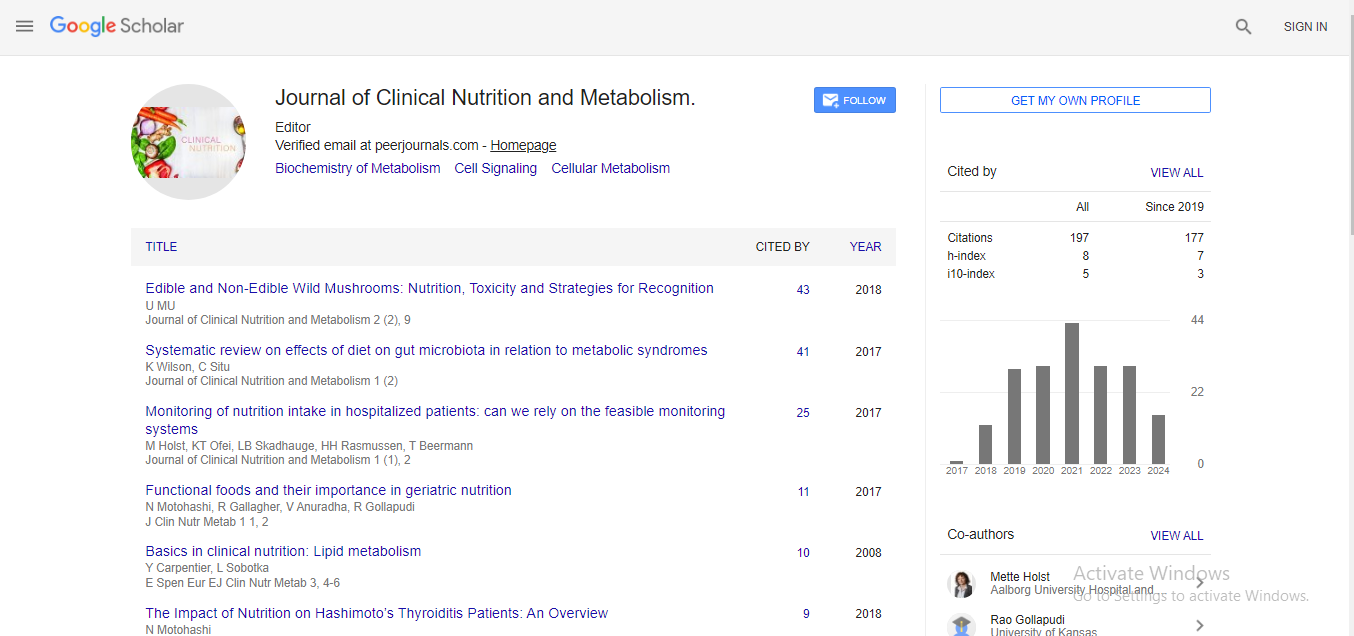Commentary, J Clin Nutr Metab Vol: 6 Issue: 3
Clinical Trials Meeting of the General Thoracic Surgical Club
Mark Allen*
Department of Clinical and Experimental Biomedical Sciences, University of Florence, Italy
*Corresponding Author: Mark Allen
Department of Clinical and Experimental Biomedical Sciences, University of Florence, Italy
E-mail:allenmark@gmail.com
Received date: 27-April-2022, Manuscript No. JCNM-22-63716;
Editor assigned date: 29- April-2022, PreQC No. JCNM-22-63716(PQ);
Reviewed date: 13- May-2022, QC No JCNM-22-63716;
Revised date: 20- May-2022, Manuscript No. JCNM-22-63716 (R);
Published date: 25- May-2022, DOI:10.35841/jcnm.100097
Citation: Allen M, Clinical Trials Meeting of the General Thoracic Surgical Club. J Clin Nutr Metab 6:3.
Keywords: Nutritional Epidemiology, Nutrition and Disease, Nutrition and Genetics, Community Nutrition
Description
Lacunar stroke accounts for nearly a quarter of all ischemic strokes and is an important cause of vascular cognitive impairment and madness. Despite of its significance, the pathogenesis of lacunar stroke is less understood than that of other stroke subtypes, similar as large roadway complaint and cardio embolism. This is incompletely because lacunar stroke is infrequently fatal during its acute phase, and thus, there's a lack of pathological data to regard this condition as dangerous. Also, lacunar infarcts are frequently not easily visible on reckoned tomography reviews. Accurate phenotyping requires glamorous resonance imaging. It has been shown that reckoned tomography- grounded styles combined with the lack of detailed disquisition of the source of emboli, as used in numerous epidemiological studies and clinical trials, can over diagnose small vessel complaint; as numerous as 50 of cases diagnosed as lacunar stroke turn out to be due to other causes when more detailed imaging, including the use of the MRI, is performed. Still, there are veritably many epidemiological studies of MRI- grounded subtypes. A man, 52 times of age, was brought to Mintohardjo Hospital. He complained of weakness on his left thumb and indicator cutlet since the day ahead, when he was sitting down. Due to these complaints, his fritters cannot be uncurled and appear fraudulent as if holding a pencil. The man also complained of vocalized speech since the day ahead, which still sounded coherent, but delicate to comprehend.
Chaddock's Pathological
The case had no difficulty swallowing, and was still suitable to eat and drink. The case complained of a pulsing headache in all areas of the head, he gave his pain 5 out of 10 in the pain scale. The case didn't complain of nausea, blackout, or seizures. His capability to urinate and defecate remained unchanged. The case has history of right-sided weakness after a stroke 3 times agony; the case took 80 mg aspirin. The case has a history of hypertension and has been taking 10 mg amlodipine every morning. The case's family said the case routinely goes to the croaker to keep his hypertension under control. The case used to bomb but has now stopped. The case now substantially remains at home. The vital signs on admission are as follows blood, palpitation rate of 82 beats per nanosecond, respiratory rate of 20 breaths per nanosecond, oxygen achromatism of 98, temperature 37 °C. On physical examination, there appeared to be paresis of the right facial whim-whams and hypoglossus whim-whams. Motor strength in the right hand and bottom, as well as left hand is 3, while the left leg had normal motor strength. The man had normal sensitive perception. Physiological revulsions of the biceps, triceps, and patellar sounded increased on the right extremity. The left patellar kickback isn't visible. Babinski and Chaddock's pathological revulsions are seen in the right extremity. The laboratory findings showed SARS-CoV-2 rapid-fire test antigen was negative. Anon-contrast CT checkup of head using the parenchymal window showed a hypodense lesion on the left pons, interpreted as a lacunar infarct. Grounded on these findings the case was diagnosed with lacunar infarction in old stroke. The case was treated in sanitarium and was given an aspirin tablet once a day. The case also had his lipid profile checked.
Thoracic Surgical
On the alternate day of treatment, the case only complained of weakness of the thumb and forefinger and spoke slightly slowly; there was no complaint of headache. Vital signs are normal. There was no change in remedy. The third day of treatment, the case was discharged and specified. Lacunar strokes represent roughly 25 of ischemic strokes and utmost are associated with good issues. Still, in 20 to 30 of cases with lacunar stroke, early neurologic damage occurs within the first days after stroke onset. Lacunar stroke was defined as acute lacunar pattern with infarction< 15 mm in periphery in the rudimentary ganglia, deep white matter, thalamus or pons that isn't associated with large vessel atherosclerosis or a cardio embolic source were more expressed in lacunar stroke than innon-lacunar stroke. The neutrophil chemo attractant cytokine IL8 is more expressed innon-lacunar strokes than in lacunar strokes. Lacunar stroke also increases ERBB2. ERBB2 affects endothelial cell function and modulates the pathway and proliferation of activation may contribute to small vessel lipohyalinosis in lacunar stroke. According to the lacunar runs can be diagnosed by a combination of motor and sensitive poverties, or by a characteristic clinical pattern. The OCSP bracket has good interobserver trustability, can give rapid-fire information about the etiology and prognostic of acute stroke, and is easy to communicate between croakers. Still, studies show that though the OCSP bracket rightly identifies no lacunar stroke subtypes, the perceptivity and particularity in relating imaging verified lacunar infarcts are inconsistent, particularly in the early hours after stroke onset.
 Spanish
Spanish  Chinese
Chinese  Russian
Russian  German
German  French
French  Japanese
Japanese  Portuguese
Portuguese  Hindi
Hindi 